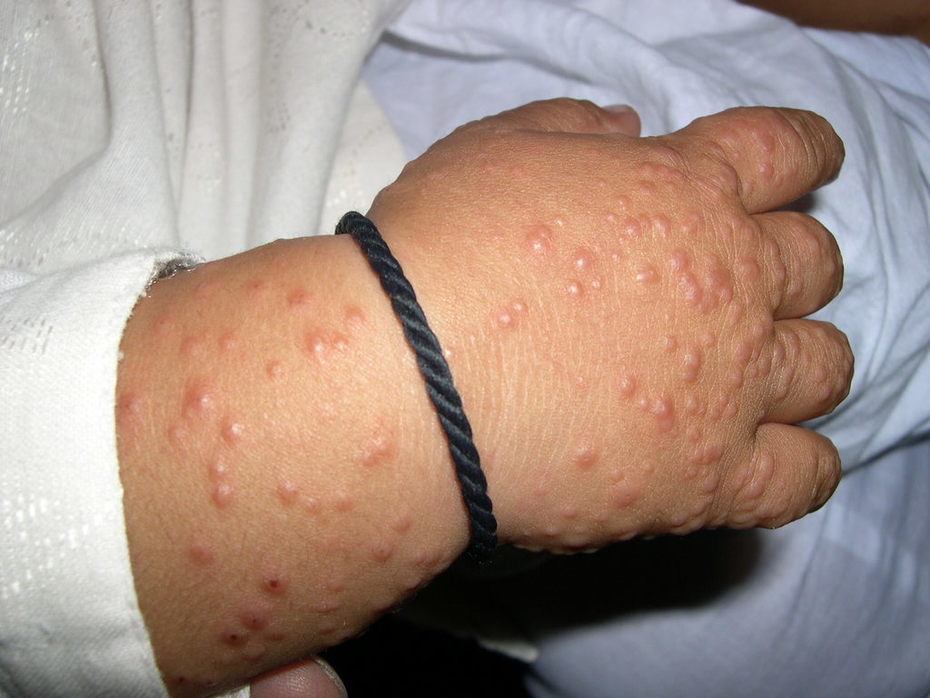Crosti-Gianotti Syndrome: Symptoms, Causes, Treatment
What are the symptoms of Crosti-Gianotti syndrome?
Crosti-Gianotti syndrome, also known as papular acrodermatitis of childhood, is a rare viral exanthem (rash) that primarily affects infants and young children. The syndrome is characterized by the following symptoms:
- Skin rash: The most prominent symptom of Crosti-Gianotti syndrome is a distinctive skin rash that typically appears on the face, buttocks, and extensor surfaces of the limbs (outer surfaces of the arms and legs). The rash consists of small, red or purple, flat-topped papules (bumps) that may be slightly raised and may be itchy.
- Symmetrical distribution: The rash tends to be symmetrical, meaning it appears on both sides of the body in a similar pattern.
- Fever: Some children with Crosti-Gianotti syndrome may develop a mild fever along with the rash.
- Generalized symptoms: In some cases, children may experience mild symptoms such as malaise (feeling unwell) or irritability.
The rash typically lasts for several weeks before resolving on its own. It is believed to be caused by a viral infection, although the specific virus responsible for Crosti-Gianotti syndrome is not always identified. The syndrome is generally considered to be a benign and self-limiting condition, and treatment is focused on relieving symptoms such as itching or discomfort.
What are the causes of Crosti-Gianotti syndrome?
Crosti-Gianotti syndrome, also known as papular acrodermatitis of childhood, is believed to be caused by a viral infection, although the specific virus responsible is not always identified. Some studies have suggested an association with certain viruses, including:
- Epstein-Barr virus (EBV): EBV is a common virus that is associated with infectious mononucleosis (mono) and may play a role in the development of Crosti-Gianotti syndrome in some cases.
- Cytomegalovirus (CMV): CMV is another common virus that can cause symptoms similar to those of Crosti-Gianotti syndrome. However, the role of CMV in the development of the syndrome is less clear.
- Other viruses: Other viruses, such as enteroviruses and parvovirus B19, have also been suggested as possible causes of Crosti-Gianotti syndrome in some cases.
It’s important to note that while these viruses may be associated with Crosti-Gianotti syndrome, the exact cause of the syndrome is not always identified. Additionally, not all children who are infected with these viruses will develop the syndrome. The syndrome is generally considered to be a benign and self-limiting condition, and most children recover without complications.
What is the treatment for Crosti-Gianotti syndrome?
Crosti-Gianotti syndrome, also known as papular acrodermatitis of childhood, is a self-limiting condition that typically resolves on its own without specific treatment. The main goals of treatment are to relieve symptoms such as itching and discomfort. Treatment options may include:
- Topical corticosteroids: Topical corticosteroid creams or ointments may be used to help reduce inflammation and itching associated with the rash. These medications should be used under the guidance of a healthcare professional.
- Antihistamines: Oral antihistamines may be recommended to help relieve itching and discomfort caused by the rash. Antihistamines can also help reduce the risk of scratching, which can lead to skin infections.
- Emollients: Emollients, such as moisturizing creams or lotions, can help soothe the skin and reduce dryness and itching.
- Cool compresses: Applying cool, moist compresses to the affected areas can help relieve itching and discomfort.
- Avoiding irritants: It’s important to avoid using harsh soaps or detergents that can irritate the skin further.
In most cases, Crosti-Gianotti syndrome resolves within a few weeks to months without any long-term complications. However, if you have concerns about your child’s rash or if the rash is severe or persistent, it’s important to consult with a healthcare professional for an accurate diagnosis and appropriate management.




